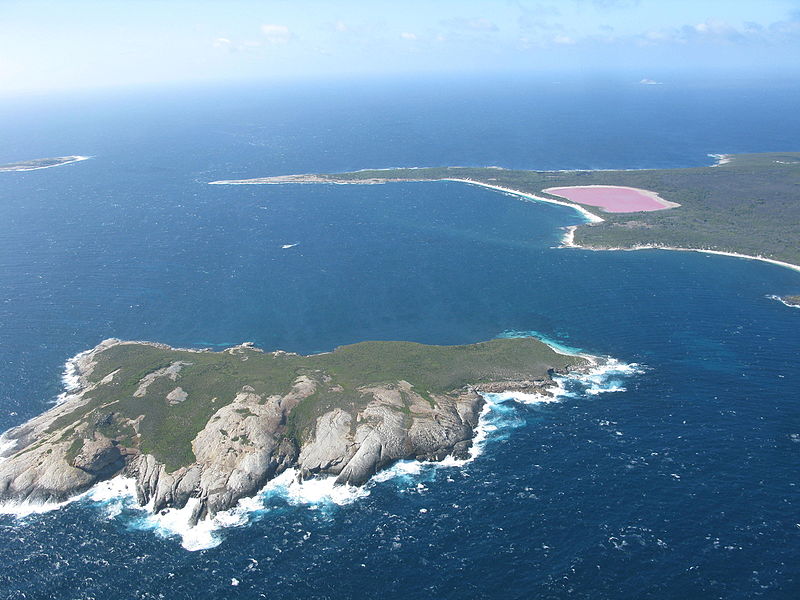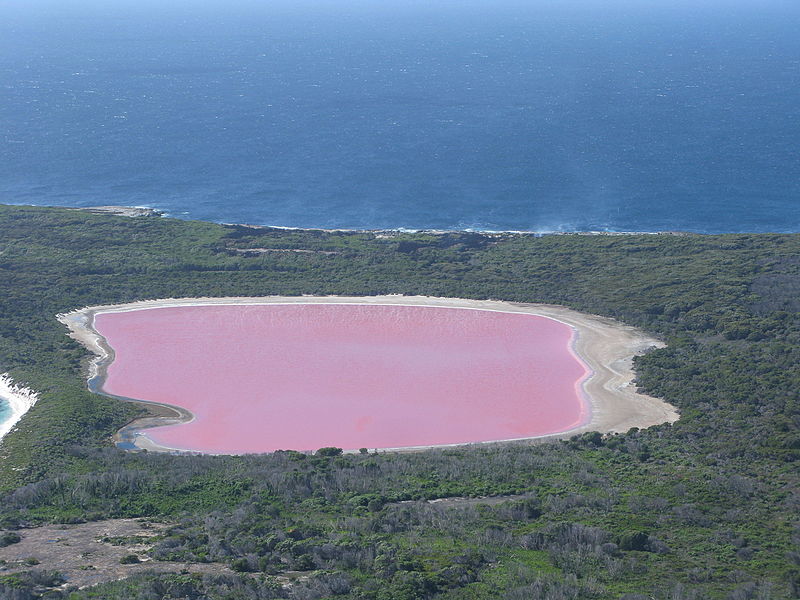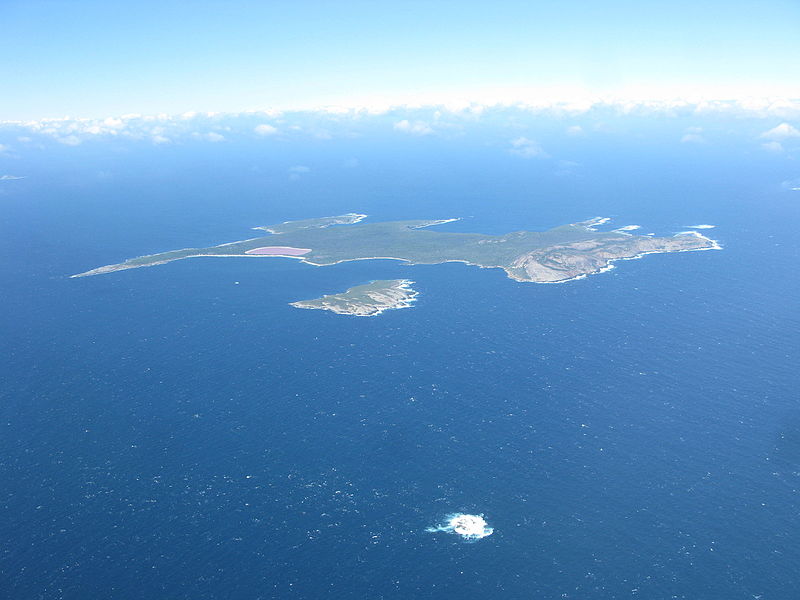Lake Hillier is located on Middle Island, the largest of the islands that make up the Recherche Archipelago, off the coast of Esperance off the south coast of Western Australia.
Middle Island, is an uninhabited nature preserve covered in dense eucalyptus forest. Matthew Flinders, the captain of the British expedition in 1802, was the first to discover the island. In January 1802, He went ashore and climbed to the island’s highest peak, which is today named after him.

When Matthew Flinders went off to the northeast, he was surprised to see “a small lake of a rose color,” as he recorded in his log:
“In the north-eastern part was a small lake of a rose color, the water of which, as I was informed by Mr Thistle who visited it, was so saturated with salt that sufficient quantities were crystallized near the shores to load a ship. The specimen he brought on board was of a good quality and required no other process than drying to be fit for use.”
The unusual lake Flinders found was named Lake Hillier by a crewman who died of dysentery while they were docked at Middle Island.

The crew discovered that the water in Lake Hillier was almost as salty as the water in the Dead Sea, and they supplied their ship with heaps of salt from its shores.
The lake is about 600 meters long and it’s around 250 meters in width, and is surrounded by a rim of sand and dense woodland of paperbark and eucalyptus trees.
No one fully knows why the lake is pink. Scientists speculate that the color comes from a dye created by bacteria that lives in the salt crusts.

Despite the fact that its water is almost as salty as in the Dead Sea, Lake Hillier is safe to swim in.
Lake Hillier is not the only pink lake in the world, but is the only pink lake in the world that its water never loses its pinkish hue.
